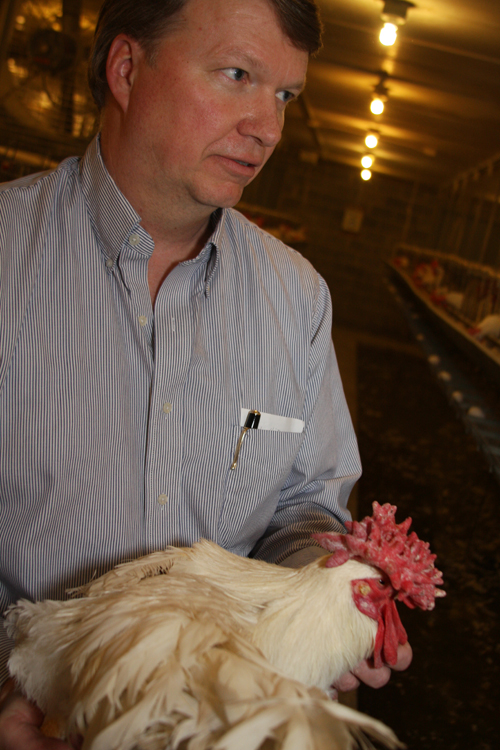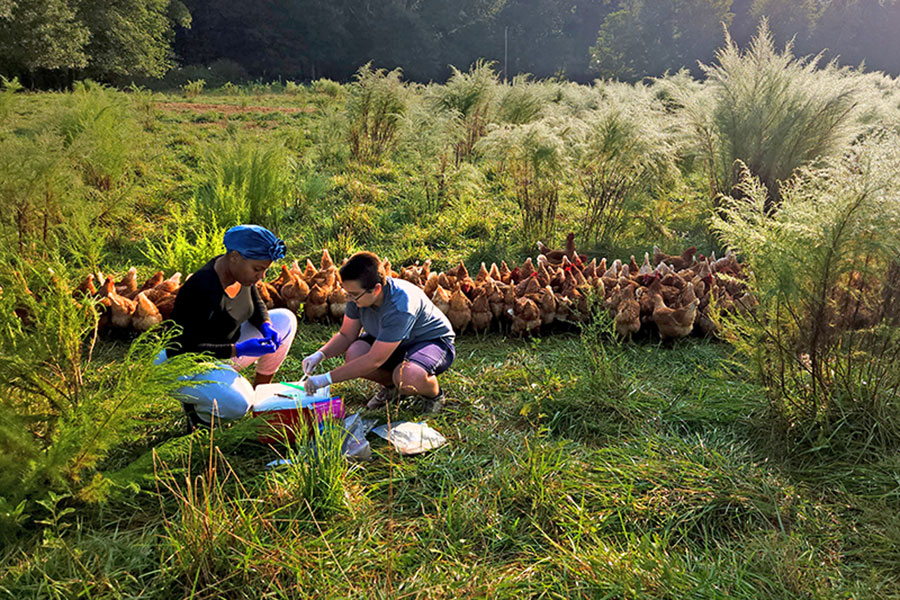According to a University of Georgia poultry specialist, if chickens eat a bit of charcoal it helps lower the amount of ammonia in their manure, which can lead to happier, healthier and more environmentally friendly chickens.
Casey Ritz, a UGA Cooperative Extension poultry scientist, has been researching charcoal as an additive to poultry bedding to control ammonia levels in chicken houses for the past four years. It was working, but he thought charcoal might be able to do more from inside the chicken.
“Our question was, ‘if we feed it to chickens, could we stop ammonia production before it hits the ground?’” he said.
High levels of ammonia in litter can affect a chicken’s growth and performance.
One group of chickens was given feed with charcoal added. Another group received normal feed without charcoal. Ritz and his colleagues then took the chicken manure and incubated it. They found a significant drop in the amount of ammonia in the manure of the chickens fed the charcoal compared to the chickens who ate regular feed, he said.
The researchers were initially worried that the chickens might not eat feed with charcoal in it. Chicken feed is usually light brown. The charcoal turns it black. Fortunately, the color didn’t bother the chickens. And, thanks to the charcoal’s affect on manure color, the researchers knew without a doubt which chickens had charcoal in their diets.
Charcoal is very porous, making it an excellent natural filter. It has no nutritional value for chickens, so it would only be filler in their feed. The scientists now want to see how much charcoal needs to be added to a chicken’s diet in order to be effective.
“We want to have the biggest bang for the buck with added char,” Ritz said. Right now, he thinks that number is between 1 percent and 2 percent of poultry feed. He’ll conduct experiments in the next few months to figure final formulation.
Better fertilizer
Chickens produce ammonia through their manure, also called litter. The nitrogen in the feed they eat is converted into uric acid in their intestines. When charcoal is used in the feed, the bacteria in the manure convert the uric acid into ammonium, not ammonia. This makes the litter less odorous or harmful, and can make it a better nitrogen fertilizer for crops, too.
“Chicken litter is a great fertilizer,” Ritz said. “But if we can enhance it a little bit, we’d make it even better. Chicken litter, from a volume standpoint, is only about 3 percent nitrogen. If we could enhance it a couple of percentage points, it would be a big deal.”
Air quality
Ammonia dissipates quickly into the air. The human nose detects ammonia between 5 and 50 parts per million. “We can’t even get 5 parts per million very far outside of a chicken house,” he said. In other words, unless someone is standing inside a poultry house, it isn’t the ammonia that sinks; it’s other odors.
Ammonia is not on the list of the Environmental Protection Agency’s six top air pollutants. But lowering it can help overall air quality. “When it really comes down to it, we need to stop ammonia before it’s made instead of trying to mitigate it after it is emitted,” Ritz said. “I think this is one of the strategies that has a good chance of success.”
Next steps
Next, Ritz and his colleagues want to make the charcoal feed additive affordable for poultry producers and find companies that will produce and sell it as a poultry additive. The U.S. Food and Drug Administration and the U.S. Department of Agriculture must approve the use of charcoal as a commercial poultry feed additive.
The charcoal is already approved for human consumption, he said.








